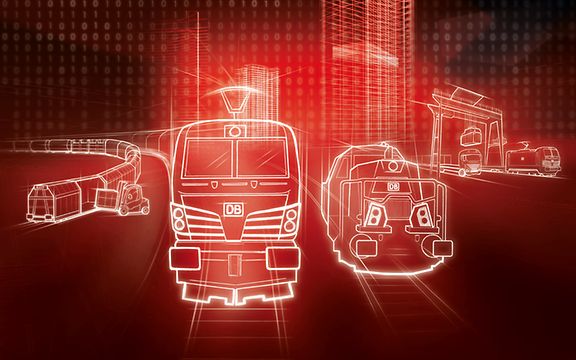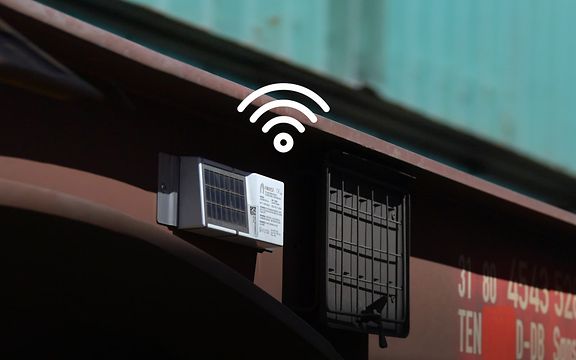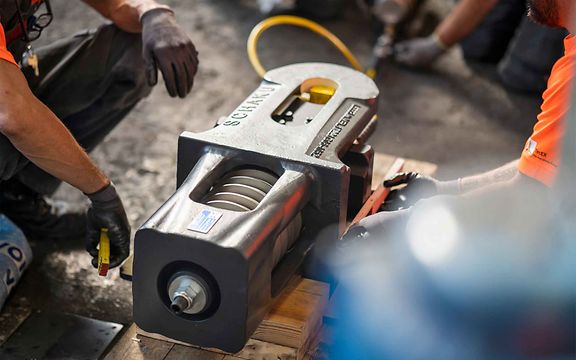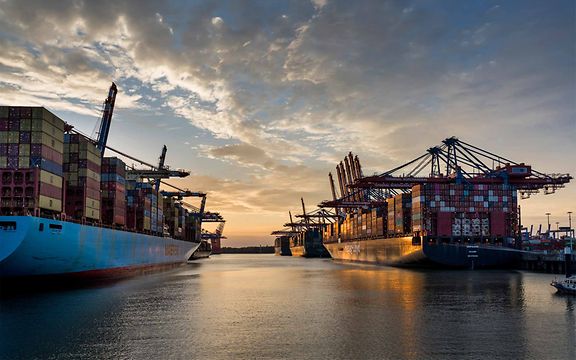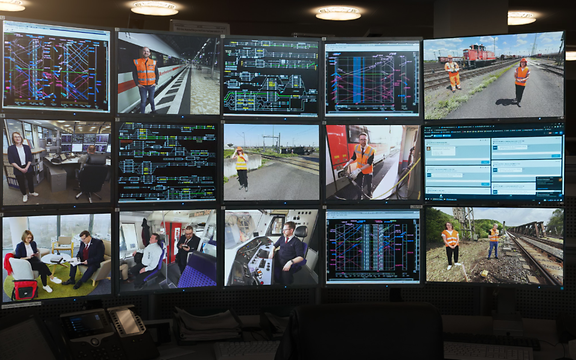Digital automatic coupling ready to enter service
The next milestone in the digitalisation of rail freight transport.
Digital automatic coupling (DAC) is a game changer for the future of freight transport. It automates coupling processes, relieves railway workers of heavy physical labour, and enables the continuous connection of power, data and compressed air lines along the entire length of the train. That makes it an important building block in the automation and digitalisation of rail freight transport.
June 2024: DAC presented in France
DB Cargo is working closely with its European partners to get even more freight onto the continent's railways. One of these partners is the French railway company SNCF (Société nationale des chemins de fer français). The two companies recently met to discuss future cooperation plans at the DB-SNCF CEO Summit at the French railway museum in Mulhouse.
At the event, Marcel de la Haye from DB Cargo and his French colleague Jérôme Ebrardt from Rail Logistics Europe presented digital automatic coupling (DAC), an important innovation project for Europe's railways. They presented the CEOs of DB AG and SNCF, Richard Lutz and Jean-Pierre Farandou, with a model of the DAC system with the new electric coupling.

DAC takes the next step towards series production after positive tests
The test phase for developing a digital freight train with DAC has been ongoing since 2020. During this test period, the train has travelled over 15,000 kilometres through ten European countries and stopped at 33 locations. "The digital freight train has successfully completed its first field tests," said Dr Sigrid Nikutta, Member of the DB Management Board for Freight Transport and CEO of DB Cargo, as the train was presented to the European Commission and the transport ministers of Belgium, Germany and Latvia in Brussels. "Now, this new technology is ready, and the first customers in rail freight transport are set to benefit. Our joint experiences will then flow into series production." After all, achieving the goal of transferring more goods from road to rail will require rail freight transport to automate and go digital: "This is the crucial lever. Europe needs green supply chains if it is to achieve its climate targets," continued Dr Nikutta.
Digital freight train showcased at the European Commission
For this reason, Deutsche Bahn is working with other European freight operating companies and numerous other industry stakeholders to develop and deploy DAC throughout Europe. High on the agenda at the European Commission's "Connecting Europe Days" event in Brussels was the presentation of a digital freight train, fitted of course with DAC. Politicians, rail operators and representatives from industry used the event to discuss the continued development of European transport systems. These discussions focused on expanding the eleven trans-European transport corridors and strengthening climate-neutral supply chains. Another major focus topic was the financing of digital automatic coupling as a new system standard.
DAC is a game changer for the entire rail system
This is because, as freight transport goes digital, customers stand to be among the main beneficiaries. The combination of DAC and continuous power and data lines promises significantly shorter journey times, partly because the brakes can be controlled electronically just like on passenger trains. Freight trains are currently limited to a top speed of 120 km/h. DAC will allow them to fit much better around fast and frequent passenger transport, creating greater capacity throughout the network. By enabling the continuous transfer of information, the data lines open up new markets and customers for rail freight transport. This makes digital automatic coupling a real game changer for the entire rail system.

